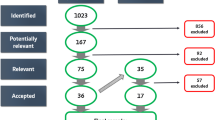Abstract
Many governments use technology incentives as an important component of their greenhouse gas abatement strategies. These “carrots” are intended to encourage the initial diffusion of new, greenhouse-gas-emissions-reducing technologies, in contrast to carbon taxes and emissions trading which provide a “stick” designed to reduce emissions by increasing the price of high-emitting technologies for all users. Technology incentives appear attractive, but their record in practice is mixed and economic theory suggests that in the absence of market failures, they are inefficient compared to taxes and trading. This study uses an agent-based model of technology diffusion and exploratory modeling, a new technique for decision-making under conditions of extreme uncertainty, to examine the conditions under which technology incentives should be a key building block of robust climate change policies. We find that a combined strategy of carbon taxes and technology incentives, as opposed to carbon taxes alone, is the best approach to greenhouse gas emissions reductions if the social benefits of early adoption sufficiently exceed the private benefits. Such social benefits can occur when economic actors have a wide variety of cost/performance preferences for new technologies and either new technologies have increasing returns to scale or potential adopters can reduce their uncertainty about the performance of new technologies by querying the experience of other adopters. We find that if decision-makers hold even modest expectations that such social benefits are significant or that the impacts of climate change will turn out to be serious then technology incentive programs may be a promising hedge against the threat of climate change.
Similar content being viewed by others
References
L. Cohen and R. Noll, The Technology Pork Barrel (The Brookings Institution, Washington, DC, 1991).
S.N. Durlauf, in: The Economy as an Evolving Complex System II, Vol. 27, eds. B.W. Arthur, S.N. Durlauf and D.A. Lane (Santa Fe Proc., NM, 1997).
P. Stoneman and P. Diederen, The Economic Journal 104 (1994) 918–930.
S.C. Bankes, Exploratory modeling for policy analysis, Operations Research 41(3) (1993) 435–449 (also published as RAND RP-211).
S.C. Bankes and J. Gillogly, in: Exploratory modeling search through spaces of computational experiments, Proc. 3rd Annual Conf. Evolutionary Programming, eds. A.V. Sebald and L.J. Fogel (World Scientific, Singapore, 1994) pp. 353–360.
R.J. Lempert and M.E. Schlesinger, Robust strategies for abating climate change, Climatic Change, forthcoming.
R.J. Lempert, M.E. Schlesinger and S.C. Bankes, When we do not know the costs of the benefits: adaptive strategies for abating climate change, Climatic Change 33 (1996) 235–274.
N. Mattsson, Internalizing technological development in energy systems models, Thesis paper, Energy Systems Technology Division, Chalmers University of Technology, Goteborg, Sweden (1997).
A. Gr¨ubler and A. Gritsevskii, Environmentally Compatible Energy Strategies Project, IIASA, Laxenburg, Austria (1998).
A. Gritsevskii and N. Nakicenovic, Modeling uncertainty of induced technological change; paper presented at the Pew Center Workshop on Economics and Integrated Assessment of Climate Change, Washington, DC (21–22 July 1999).
C. Azar and H. Dowlatabadi, A review of technical change in assessment of climate policy, Annual Review of Energy and Environment (1999).
A. Grubler, N. Nakicenovic and D.G. Victor, Dynamics of energy technologies and global change, Energy Policy 27 (1999) 247–280.
L.H. Goulder and K. Mathai, Optimal CO2 abatement in the presence of induced technological change, Working paper, Stanford University (1997).
L.H. Goulder and S.H. Schneider, Induced technological change, crowding Out, and the attractiveness of CO2 emissions abatement, Resource and Environmental Economics (1998), submitted.
W. Cline, The Economics of Global Warming (Institute for International Economics, Washington, DC, 1992).
W.D. Nordhaus and Z. Yang, The American Economic Review 86(4) (1996).
M. Aoki, American Economic Review (1986).
M. Aoki, Journal of Economic Literature (1990).
L. Marengo, Journal of Evolutionary Economics 2 (1992).
S. Davies, The Diffusion of Process Innovations (Cambridge University Press, Cambridge, 1979).
G. Ellison and D. Fudenberg, Quarterly Journal of Economics 440 (1995) 93–125.
A. Grubler, The Rise and Fall of Infrastructures (Physica Verlag, Heidelberg, 1990).
J.H. Miller, Active Nonlinear Tests (ANTs) of complex simulations models, Management Science 44(6) (1998) 820-30.
T. Morita and H.-C. Lee, Appendix to emissions scenarios database and review of scenarios, Mitigration and Adaptation Strategies for Global Change, Vol. 3 (1998) pp. 121–131.
N. Nakicenovic, V. Nadejda and T. Morita, Emissions scenarios database and review of scenarios, Mitigration and Adaptation Strategies for Global Change, Vol. 3, (1998) pp. 95–120.
L. Taylor, Income Distribution, Inflation and Growth (MIT Press, 1990) ch. I.
R.J. Lempert, M.E. Schlesinger, S.C. Bankes and N.G. Andronova, The impacts of climate variability on near-term policy choices and the value of information, Climatic Change, forthcoming.
M. Aoki, The Japanese Economic Review 46 (1995) 148–165.
D.A. Lane, in: The Economy as an Evolving Complex System II, Vol. 27, eds. B.W. Arthur, S.N. Durlauf and D.A. Lane (Santa Fe Proc., 1997).
M. Grubb, T. Chapuis and M. Ha-Duong, Energy Policy 23 (1995) 417–431.
S.H. Schneider and L.H. Goulder, Nature 389 (1997).
L. Christiansson, Diffusion and learning curves of renewable energy technologies, Working paper, IIASA, Luxembourg, Austria (1995).
J.W. Pratt, Econometrica 32 (1991) 122–136.
M.S. Marquis and M.R. Holmer, Choice Under Uncertainty and the Demand for Health Insurance, RAND N-2516-HHS, Santa Monica (1986).
C.J. Cichetti and J.A. Dubin, Journal of Political Economy 102 (1994) 169–86.
P. Hoeller and J. Coppel, Energy taxation and prices distortions in Fossil fuel markets: some implications for climate change policy, Working paper, Economics Department, no. 110, OECD, Paris (1992).
A.B. Jaffe and R.N. Stavin, Energy Journal 15 (1994) 43–65.
A.B. Jaffe and R.N. Stavins, Journal of Environmental Economics and Management 23 (1995).
J.H. Holland et al., Induction (MIT Press, Cambridge, Mass, 1986).
J.H. Holland, Hidden Order How Adaptation Builds Complexity (Addison-Wesley Publishing Co., 1995).
L. Marengo, Revue Internationale de Systemique 7(5) (1993).
L. Dibiaggio and P. Musso, Learning and organizational design; paper presented at a conference on Economics with Heterogeneous Interacting Agents, Ancona, Italy (May 1998).
A. Marcet and T. Sargent, American Economic Review, Papers and Proceedings 78 (1988) 168–172.
A. Marcet and T. Sargent, Journal of Economic Theory 48 (1989) 337–368.
A. Marcet and T. Sargent, Journal of Political Economy 97 (1989) 1306–1322.
B.W. Arthur and D.A. Lane, Information constriction and information contagion, SFI economics research program, Working paper, Santa Fe Institute (1991).
L.E. Blume and D. Easley, Journal of Economic Theory 34 (1984) 116–129.
M. Bray and D. Kreps, in: Arrow and the Ascent of Modern Economic Theory, ed. G. Feiwel (New York University Press, New York, 1987).
M. Feldman, International Economic Review 28 (1987) 635–650.
R. Townsend, International Economic Review 19 (1978) 481–494.
F. Lewis, Optimal Estimation (Wiley, New York, 1986).
A.P. Kirman, in: The Economy as an Evolving Complex System II, Vol. 27, eds. B.W. Arthur, S.N. Durlauf and D.A. Lane (Santa Fe Proc., 1997).
P. Stoneman, The Economic Analysis of Technology Policy (Clarendon Press, Oxford, 1987).
E. Mansfield, Econometrica (1961).
D.A. Robalino and R.J. Lempert, Applying a multiagent-model of technology diffusion to the analysis of climate change policy; paper presented at a conference on Economics with Heterogeneous Interacting Agents, Ancona, Italy (May 1998).
A.P. Bassanini and G. Dosi, Competing technologies, international diffusion and the rate of convergence to a stable market structure, Interim report from the International Institute for Applied Systems Analysis (1998).
World Bank, World Development Report, Washington, DC, 1996.
A. Dean and P. Hoeller, Costs of reducing CO2 emissions. Evidence from six global model, Working papers, Department of Economics, no. 122, OECD, Paris (1992).
J.M. Burniaux, J. Martin, G. Nicoletti and J. Oliveira, GREEN, A Multi-Sector, Multi-Region General Equilibrium Model for Quantifying the Costs of Curbing CO 2 Emissions, A Technical Manual, OCDE, Paris (1992).
J.T. Houghton, G.J. Jenkins and J.J. Ephraums, Report of the intergovernmental panel on climate change, Cambridge University Press (1995).
A.S. Manne and R.G. Richels, Buying Greenhouse Insurance: The Economic Costs of Carbon Dioxide Emissions Limits (MIT Press, Cambridge, 1992).
J.W. Tester, D.O. Wood and N.A. Ferrari, eds, Energy and the Environment in the 21st Century (MIT Press, Cambridge, 1991).
Author information
Authors and Affiliations
Rights and permissions
About this article
Cite this article
Robalino, D.A., Lempert, R.J. Carrots and sticks for new technology: Abating greenhouse gas emissions in a heterogeneous and uncertain world. Integrated Assessment 1, 1–19 (2000). https://doi.org/10.1023/A:1019159210781
Issue Date:
DOI: https://doi.org/10.1023/A:1019159210781




